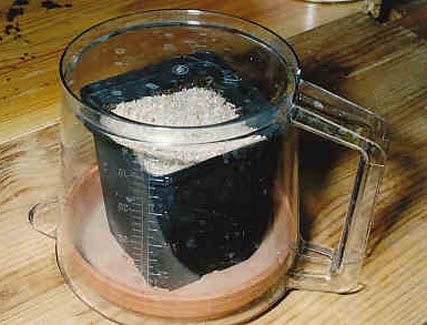photo 15 / 28
The seeds have just been sown in a plastic square pot of 4.7in X 4.7in X 5.5in. The compost consists in a mixture of heath-mould, pearlite and siliceous sand ; the pH of the mixture is acid. The seeds were deposited on the slightly packed compost, then they were covered with a layer of quartz gravel, thick of approximately 0.08 in. Formerly I tried to cover with sand, but I noted that sand contributes to the formation of algaes which harm sowing ; thus, I definitively opted for gravel.
Sowing was made in May, because the temperatures rise and the days are getting longer. Winter sowing makes it necessary to artificially light and/or heat.
The sown pot is bottom watered, so that the compost is strongly wet. We can add a fungicide to the water to prevent seedlings from damping off. So that germination starts well, humidity around seeds must be kept very high for a few days ; this is why I turned on the pot a transparent measuring cup upside down which lets the light go through and prevents the water which is in the compost from evaporating. This lid will be maintained until the majority of seeds germinated, resulting in a seedling coming out of the ground.
The pot is located in a luminous place, without direct sun, with temperatures ranging between 59°F nightly and 68 to 77°F dayly. (The temperatures are adapted according to the genus of sown cacti; for example, Turbinicarpus, will need lower minimal temperatures and higher maximal temperatures.)
_________________________________________________________________________
____________________________________________________________________________________
